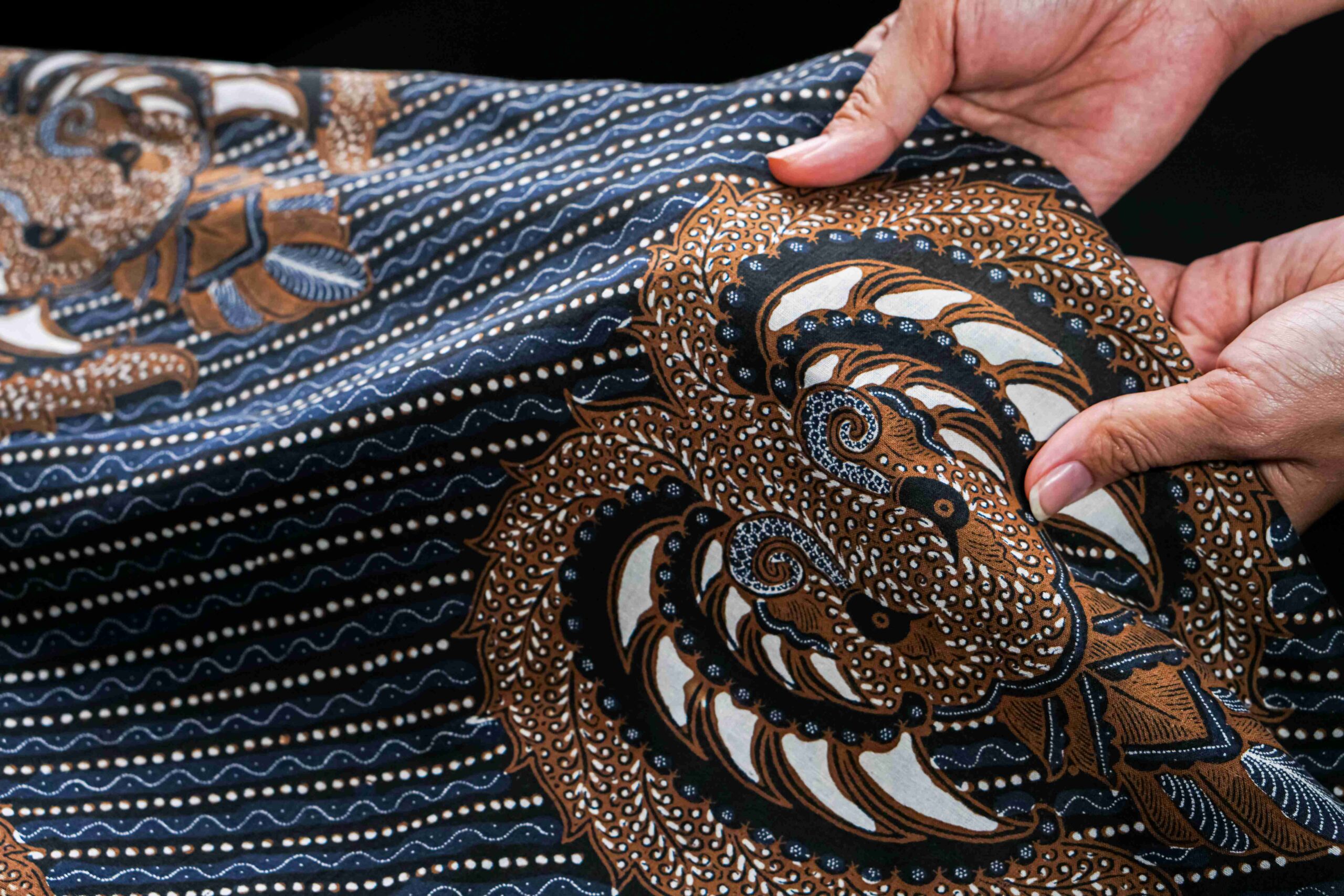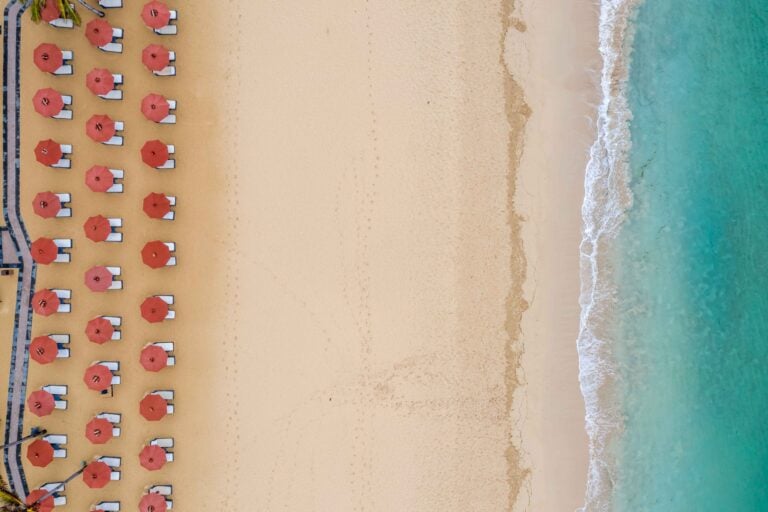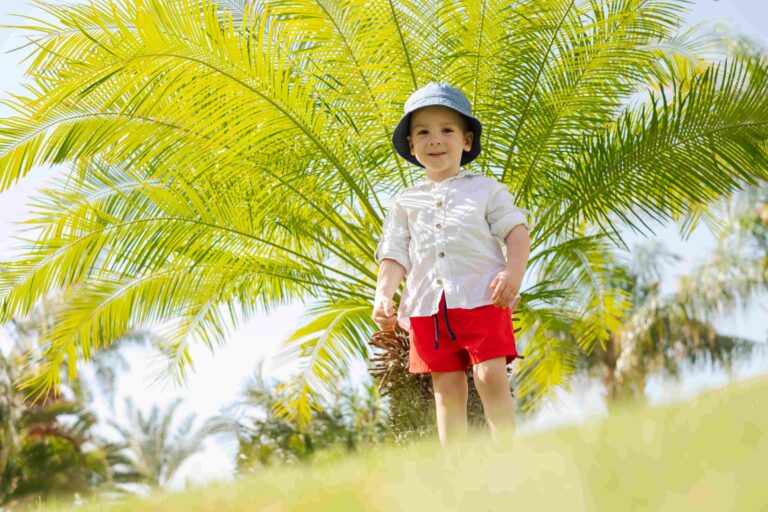Bali is an amazing place to go fabric shopping if you love to have your clothes made to order if you love to create your own intricate designs.
However, before you buy fabric here, it’s a good idea to familiarize yourself with the huge range of different textiles and to know exactly what you’re shopping for.
Our guide to the different Balinese textiles will help you ensure you get exactly what you’re looking for.
The Basic History Of Balinese Fabrics
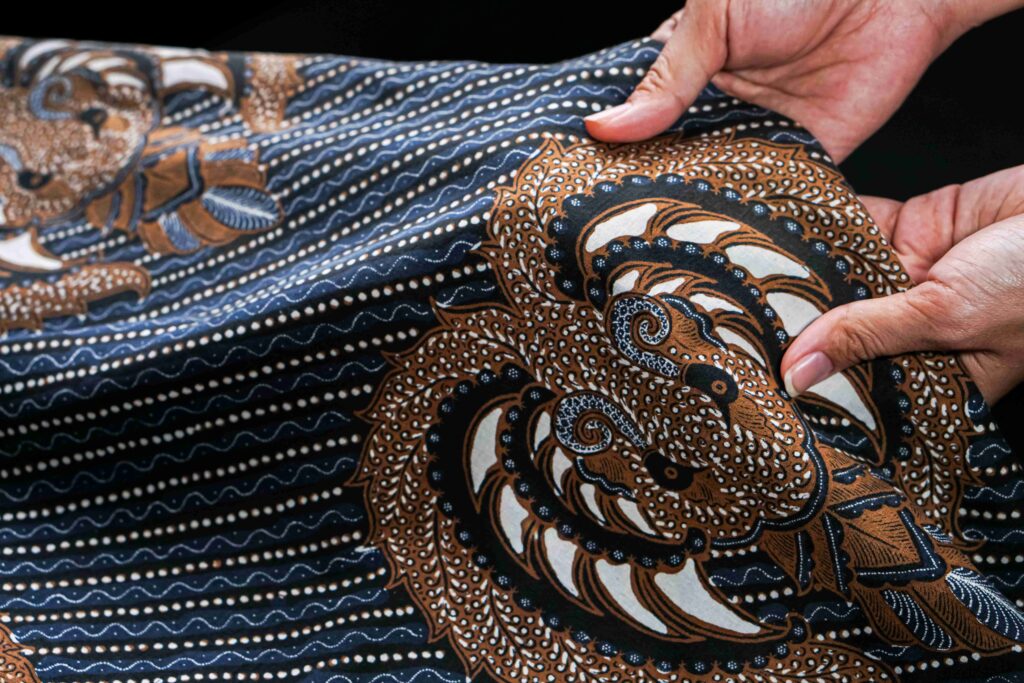
It’s important to recognize that while Bali is, of course, an island, it has been influenced throughout its history by the other islands of the archipelago.
Before the 10th century AD, Bali went its own way, but from then on, Bali began to be significantly influenced by the people of Java, particularly after the fall of the Majapahit Kingdom (the most significant Hindu-Buddhist rule that Indonesia ever saw).
As Islam swept through Java, the aristocracy of the Majapahit Kingdom fled to Bali and they brought their traditional textiles with them.
Thus, the reality is that Bali’s fabrics are a reflection of not just the traditional Balinese fabrics but also those of pre-15th century Java.
It’s also important to note that the use of and creation of textile products changes constantly, there’s no prescriptive way to describe the use of any given textile product within this “living tradition”. The best we can hope for here is to take a snapshot in time.
It’s worth noting that Bali is tropical and there is very little value placed on old fabric. This is because, without modern storage and preservation methods, fabric has a tendency to rot and deteriorate in the humid conditions.
So, new cloth is valued more than old and there is a certain moral virtue that can be asserted by replacing old cloth with new.
The Symbolism Of Balinese Fabrics

Balinese people see their fabrics as something more than just the cloth that clothes and other products are made out of.
Each fabric is used to express something about the nature of the divine and how that divinity is realized in the world around us.
Every spiritual activity in Bali has a cloth associated with it. In the home, each day, a member of the family must make an offering (this is, almost always, a woman).
That woman will wear a sash of a specific cloth to carry out this duty.
You will often see important objects (which are all considered to have spirits as per the original pre-Hindu animist traditions of the region) wrapped in the black and white squares of Wastra Poleng cloth.
If you watch the men before the festivals here gathering in the temple, they will be clothed with sarongs and sashes.
As a general rule of thumb, the more significant the festival (and there are many festivals in the traditional Balinese calendar) the more complex the cloth and the clothing. Formal occasions in Bali are thus, very easy to recognize.
The Different Types Of Balinese Textiles
Wastra Poleng Cloth (Bali’s Most Distinct Pattern)
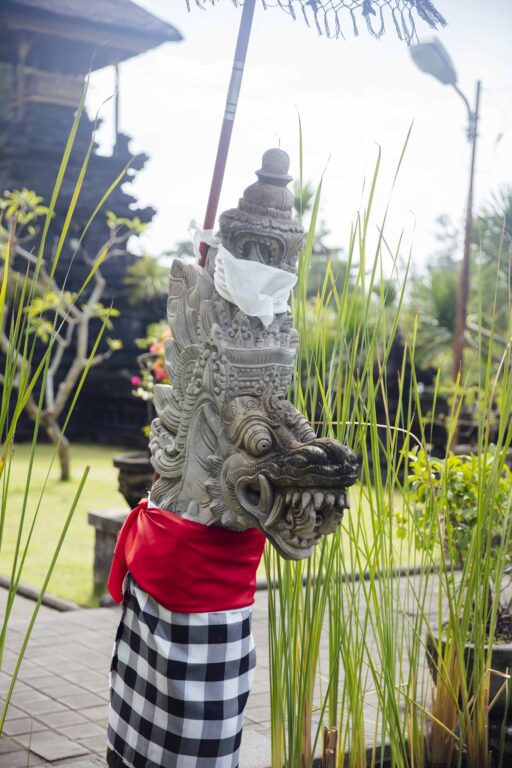
The Wastra Poleng is the near-ubiquitous cloth of black and white checks that you encounter all over the island.
The colours symbolize the two contradictory characteristics Rwa Bhineda (literally, “the two opposites”) which can be “good and bad”, “positive or negative” or any other such association.
This symbolizes the idea that if there is good, there must be evil to balance it in the world and vice-versa.
Endek Cloth (High Caste Cloths)
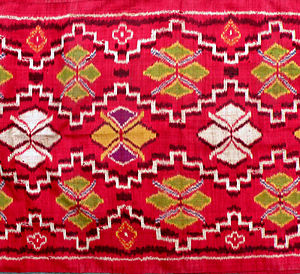
Ikat is a method of dying certain textiles that resist traditional dying techniques. It can be carried out on the weft, the weave or both the weft and the weave.
Endek use a pattern dervied from ikat of the weft. It used to be solely used by the high-caste Balinese but in today’s day and age, it’s available to all.
In fact, there are workshops all over Tabanan, Gianyar and the capital Denpasar that produce this fabric in bulk.
It appears to originate from the Buleleng Regency and would originally have been nearly pure red, but today, yellow and green have been added and the original songket ends (a technique that places gold or silver threads between the threads of the main pattern) have been lost.
Keling Cloths (Indian Cloths?)
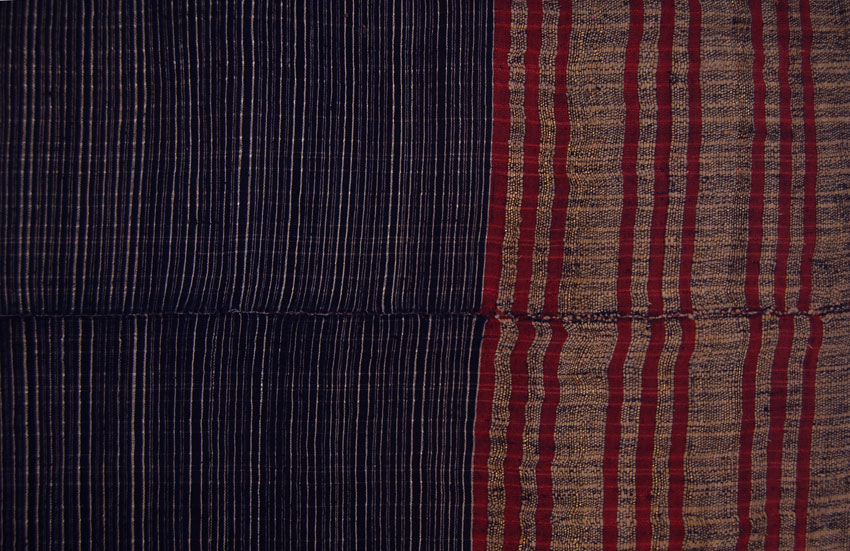
The word keling appears to come from the original Balinese word for an Indian merchant. Thus, it’s possible that the weaving techniques used in this cloth come from India.
It’s also possible that the name comes from the former queen of Tenganan Village (which may be why women tend to wear this fabric rather than men).
Keling is woven in stripes of colours, red, blue, black and yellow and uses only natural dyes. It’s used to wrap babies for their 6-month coming-of-age ceremony to protect them against evil spirits.
Bebali Textiles (Sacred Cloths)
You can find these textiles at the Kumba Sari Market in Denpasar, however, it’s fair to say that it’s not fully understood what function, if any, they are meant to play in Balinese society today.
There are examples of this cloth being used in sacred ceremonies in a museum in Basel, Switzerland but no such examples of more modern usage.
However, the current cloths are made of high-quality cotton and natural dyes and are every bit as good as the museum samples.
Kamben Cepuk (Nusa Penida’s Ceremonial Cloth)
This is an ikat of the weft cloth that is only made in Nusa Penida. It was once used for clothing but today tends to be used to decorate the island’s temples.
Geringsing (Double Ikat Cloth)
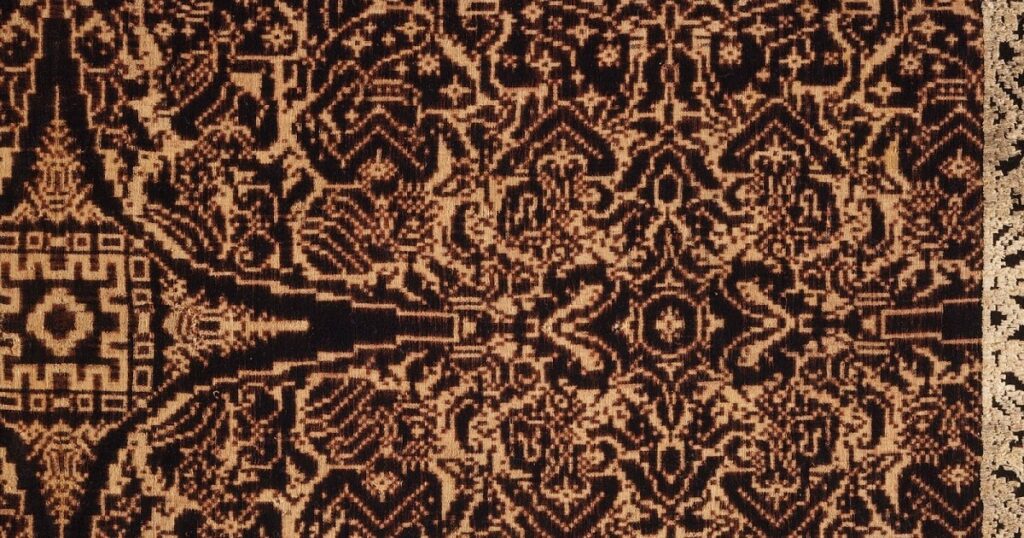
This double ikat cloth comes from Tenganan Pegringsinga Village. It is used as a sacred cloth that can heal or help carry out an exorcism.
The first Majapahit king was said to use this cloth to clothe his warriors to protect them in battle.
There are many different patterns used in Geringsing and it’s very difficult to make. There are rituals required throughout the production process too.
Ider-Ider (Story Cloths)
These cloths have stories from the Hindu epics embroidered upon them and our found in temples and bales, but never on clothing.
Lamak (Penjor Banner Cloth)
The tall poles erected outside of temples during festivals are called penjor and the cloth banners that hang from them are made of lamak.
Lamak is expected to deteriorate quickly (it’s made from cross-cut and has palm leaf application) and will usually be abandoned after a single use (fortunately, it’s entirely biodegradable).
Lamak is also associated with Dewi Sri, the goddess of fertility and prosperity. Though this goddess can be associated with both sexes, not just women.
Prada/Perada (Gold Leaf Cloth From Majapahit)
This cloth originates with the aristocracy of Java and while batik was once the base cloth, now they use brightly coloured commercial cloth instead.
And where gold dust or gold leaf was once used to decorate Prada cloth, now it’s nearly always gold paint or a fake plastic gold foil.
You can find this bright attractive cloth which is a symbol of prosperity and nearly every ceremonial function in Bali. It’s also used as a costume by kecak dancers.
Songket Mixed Cloths (Wedding Cloths)
This cloth, typically worn by the bride and the groom at a Balinese wedding uses a supplementary weave of the weft to make the patterning.
Originally, this cloth was used by the highest caste and would have been made of silk with the supplementary weave of gold thread.
Today, it’s made of cotton and uses fake gold and silver threading, it may also be made of artificial silk and viscose.
Now, it’s associated with wealth and prosperity and many Balinese people will have some songket clothing for day-to-day usage.
Rangrang Cloth (Ceremonial Cloth)
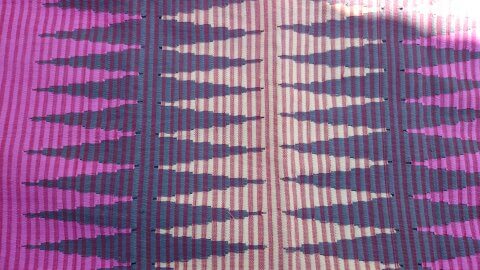
The word rangrang means “space” in Balinese. The form of slit stitching weave provides a pattern which is open and creates space.
It’s worn on the upper body by women from Seraya in East Bali during ceremonies for Dewa Yadnya (a holy offering to the gods).
Sekordi Cloth (Cloth Of Happiness)
This relatively plain cloth is used for life transition ceremonies such as protecting a child during the 3 month “touching the ground” ceremony or at the tooth filing ritual post-puberty.
It’s said to give the wearer spiritual strength and protect them from evil. Sekordi is a compound word of “suko” and “werdi” – “happiness” and “long-life”.
Bebintangan Cloth (Serayan Cloth From East Bali)
This cloth is only made in Seraya in East Bali and is similar to the keling cloth but contains a star pattern on a supplementary weave on the head and foot of the textile.
It’s meant to represent the stars of the night sky. It’s worn as a sarong or hip blanket or even to cover the whole body.
Saudan Cloth (Warding Cloth)
This cloth is from Nusa Penida and is typically used as a shoulder sling to carry young children before they are allowed to touch the floor.
It’s made out of cotton and uses only natury dyes. “Saud” means unevenly woven.
Cepul Cloth (Ritual Power)
This bright red cloth is believed to have real power in rituals. You will most commonly see it worn by dancers playing Rangda, the manifestation of Shiva’s consort Durga, in village dances.
It is also sometimes used in events that mark a rite of passage such as a birth or even death ceremony. In cremation ceremonies, this cloth is used as the funeral shroud to protect the spirit on the way to the afterlife.
It can be used as a temple decoration and may be worn by the nobility.
What About Batik?

Batik is a Javanese fabric, rather than a Balinese one. If you find batik on offer in the local stores, it may be Indonesian but it won’t be made here in Bali.
The Natural Dyes Used In Balinese Fabrics
When fabric in Bali is dyed with natural dyes it is usually cotton and some of the dyes used include:
Indigo – this creates a beautiful shade of blue that was once used in denim production, but because it’s costly, was replaced by chemical dyes. This is the hardest dye to extract.
Morinda – this sustainable dye comes from tree roots and produces a red/rusty colour. It can be combined with Indigo to create a black colour.
Some Fabric Stores In Bali
If you’re ready to do some fabric shopping now, you might want to try these locations:
Jalan Sulawesi, Denpasar – Jalan Sulawesi is a whole street of fabric shops and a great place to find traditional textiles and more modern ones too.
Bintang Harapan, Legian – they may have some local fabrics but they often focus their attention on imported materials.
Warna Jaya – this is a huge fabric store with a massive range of local and international fabrics.
Alta Moda, Legian – Alta Moda tends to stock a huge range of fabrics and it often has great sales on, or does it? We’ve never been to Alta Moda when it wasn’t running a 50% off sale.
FAQs
What Is The Traditional Fabric From Bali?
The most traditional base fabric here is cotton but wastra poleng, the dyed fabric with black and white check marks, is the fabric most commonly associated with this island.
What Are The Traditional Uses Of Textiles In Bali?
Textile uses here include clothing, spiritual defense, banner making and decorations for temples.
What Are The Textiles Of Indonesia?
There are far too many textiles in Indonesia to list here but the most famous is batik which is not made in Bali but can be found in Java.
What Is Bali Cloth?
We would suggest that the most famous Bali cloth is the wastra poleng, the black and white check mark cloth.
What Fabrics Are Made In Bali?
There are many fabrics made here including wastra poleng, endek, keling, bebali, kamben cepuk, geringsing, ider-ider, lamak, prada, songket, rangrang, sekordi, sepuk, saudan and bebintangan.
What Is The Traditional Clothing In Bali Indonesia?
The most commonly worn clothing in Bali is the “sarong” or “kamben” and it is a garment worn by both men and women.
Final Thoughts On The Traditional Textiles Of Bali
Fabric shopping in Bali is awesome thanks to the island’s rich heritage of unique textile products.
We hope that our brief tour of Bali’s textiles has helped you to understand the significance of these fabrics in Balinese life and to help you make the right selection for your uses.

